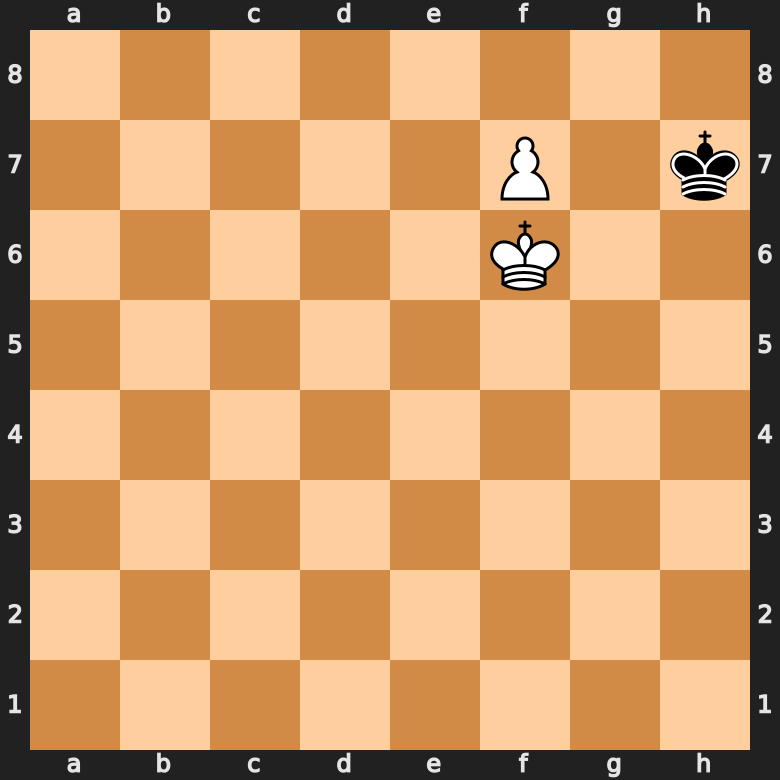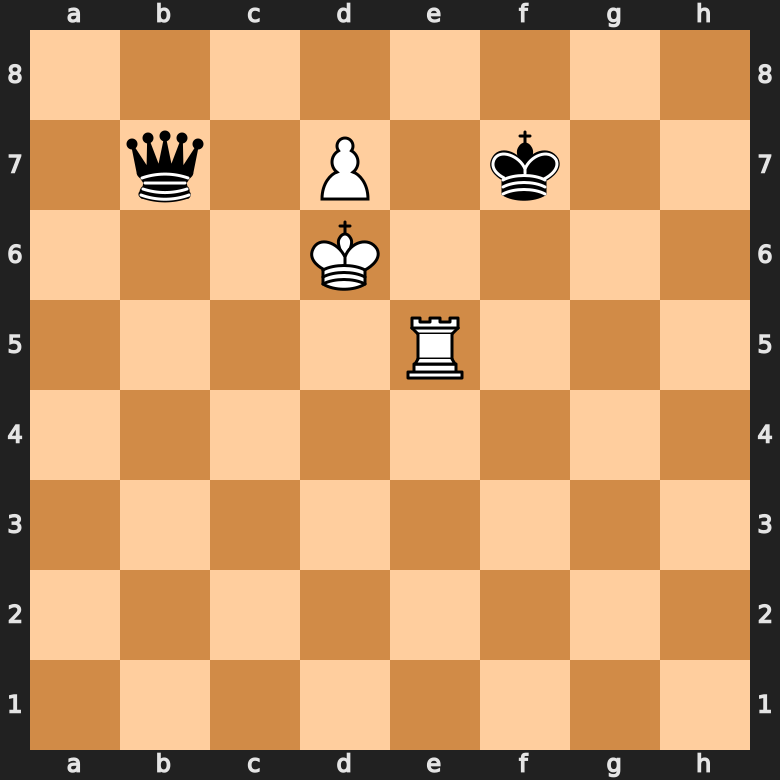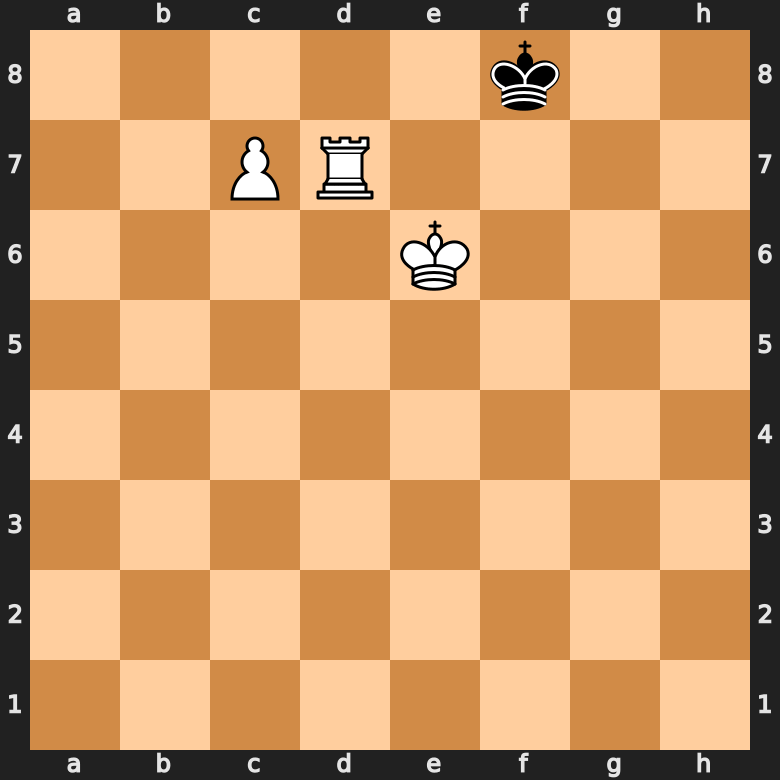Everything You Need to Know About Pawn Promotion
In this guide we’ll take a look at a special move in chess: the pawn promotion. Beginners are often confused as to how it works and why it even exists in the first place. So let’s answer the question: “What happens when the pawn reaches the other side of the board?” ♟️.
Pawn Promotion – Rules Explained
The official rules of chess state: A pawn that reaches the other side of the board must immediately be exchanged for another piece of the same color (except for the king). The exchange (i. e. promotion) takes effect immediately, meaning you could even checkmate with a pawn promotion!
While the promotion itself is mandatory, you obviously don’t have to move your pawn to the other side of the board, if you don’t fancy an extra piece (who wouldn’t want a free queen? 🤨).
The procedure of a pawn promotion summarized:
- The pawn reaches the enemy back rank (i. e. the other side of the board)
- The pawn is exchanged for either a queen, rook, bishop, or knight of the same color immediately
- The new piece is placed on the exact square the pawn left the board from
- The player’s turn ends
Visually, this is how a pawn promotion to a queen would look:

Promotion to a Queen
We already know that the queen is without a doubt the strongest piece in chess. So it makes sense for players to promote their pawn to a queen when it reaches the other side of the board. Promoting your pawn into a queen is often just called “queening”.
In 99% of instances you want to promote your pawn into a queen, to have the maximum fire power on the board. However, the remaining 1% is where you need to be careful (you might throw away a certain win!). So, why would you choose not to promote to a queen if given the choice?
Underpromotion – When and Why
In some instances it is beneficial (or required for a win!) to “underpromote” a pawn. Meaning, you do not promote the pawn to the strongest possible piece (i. e. the queen), but rather a lesser piece, often a knight. Why on earth would you do that 🤔? Well, there are a few scenarios where the underpromotion comes in handy:
Avoiding a Stalemate
In most cases underpromoting a pawn is done to avoid a stalemate. A stalemate is a position in which a king does not have any legal moves, but is not in check. The game will result in a draw.
This is especially infuriating, as it often happens in a clearly winning position. So before blindly promoting to a queen, be sure to check that your opponent still has legal moves to make.
Check out this example of a stalemate resulting from a pawn promotion to a queen:

Would White promote his pawn into a queen, the game would end in a draw, because Black has no more legal moves, but is not in check. Instead, White needs to underpromote to a rook. That way he is still able to deliver checkmate (can you spot the checkmate?).
Winning a Piece
Another reason a player might choose to underpromote a pawn is to simplify the position in the endgame:

In this position it would make total sense for White to underpromote his pawn into a knight, as it would result in a fork that would win the enemy’s queen. While the position would still be better for White after queening, underpromoting to a knight does simplify the process of checkmating and lessens the likelihood of mistakes for White.
Checkmating Through Promotion
It is even possible to directly checkmate through a pawn promotion:

By queening on c8 White delivers a check to the Black king, which has no squares left to move to – that’s checkmate!
Pawn Promotion Strategy
Although a pawn promotion usually happens in the end game, it should still be a consideration in the opening and middle game. A far-advanced pawn can be a very valuable asset by threatening a promotion, thus requiring the attention of the opponent ⚔️.
Generally, a pawn is becoming increasingly more valuable as it moves towards the other side of the board. Even when not controlling important squares, a pawn deep in enemy territory can be very useful to draw attention and weaken other parts of your opponents position.
A pawn that has no enemy pawns stopping it from reaching the back rank is considered a “passed pawn”. Those are especially important in endgames, because the opponent now has to use his pieces to stop the promotion, thus allowing for new attacking opportunities.
Pawn Promotion – Frequently Asked Questions
- Can You Promote a Pawn To a King?No, you can only promote into a queen, rook, bishop, or knight.
- How Many Queens Can You Have In Chess?Theoretically, it is possible to have up to nine queens on the board at the same time. To be fair, this scenario is highly unlikely and requires your opponent's cooperation.
- Is Pawn Promotion Forced?Yes, the pawn can't stay a pawn on the opponent's back rank. You need to choose between promoting it to a queen, rook, bishop, or knight,

